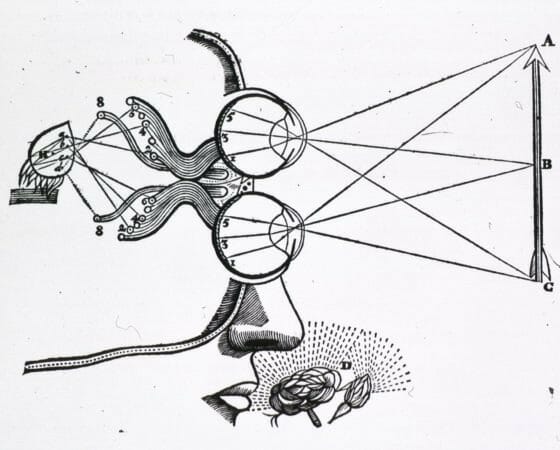How Exactly Does Our Vision Work?

Sight. It’s one of our five senses. While many of us move through our lives in the day-to-day without paying much mind to it, the concept of visual perception is fundamental to the way we see ourselves, and the world writ-large. At its most basic, visual perception is the way a person processes and interprets the light that enters their eyes. It is how the brain makes sense of the textures, shapes, colors, and lines that eyes see.
More than that, visual perception also describes a lot of complex maneuvers that enable people to understand this raw information in a meaningful way. For example, based on the texture, shape, color, and lines one sees, they might find there is a grassy field, some trees, and two butterflies playing together in the shade.
Mechanics of Perception
Visual perception functions like a computer for sight, one might say. As light from the outside environment enters the eye it turns into 100 million neural signals. There it has to be pushed through the optic nerve to the brain, causing the brain to process the information caused by that light. But the optic nerve only has 1 million nerve fibers, so before information gets sent to the brain for processing, the neural signals are filtered and compartmentalized by the eye for easier transmission to the brain.
After processing the information we get from light, our brain may recognize the forms it sees (say, a butterfly), or determine that a form is unknown, or new, or a combination of known and unknown forms. Example: a butterfly exists in the world, and that butterfly is seen by a person’s eyes as various pieces of light.
Our brain then processes what we know about the world and about these lines, textures, shapes, and colors to recognize in our mind that we are seeing a butterfly. Of course all this processing and recognition happens at—literally—the speed of light.
As a broader term, visual perception involves the type of interpretation that comprises many complex series of actions between our eyes and brain, which researchers in the fields of psychology, cognitive science, neuroscience, and molecular biology all work to better understand.
Through their collective contributions and research, these scientists help us to better explain the relationship that exists between our eyes and our brain, which helps us to understand how we communicate with each other, how images inspire or challenge us, and how humans continue to change and improve their ability to process visual information.
[Photo Via: Vintage Printable]

